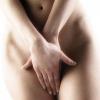
Acupuncture for primary dysmenorrhoea

Acupuncture may reduce dysmenorrhoea periodic pain according to randomised controlled trials
BACKGROUND: This review examined the currently available evidence supporting the use of acupuncture to treat primary dysmenorrhoea.
OBJECTIVES: To determine the efficacy and safety of acupuncture in the treatment of primary dysmenorrhoea when compared with a
placebo, no treatment, or conventional medical treatment (for example oral contraceptives and non‐steroidal anti‐inflammatory medication
(NSAIDs)).
SEARCH STRATEGY: The following databases were searched (from inception until March 2010): the Cochrane Menstrual Disorders and
Subfertillity Group Trials Register, Cochrane Central Register of Controlled Trials (CENTRAL) (TheCochrane Library), PubMed, CINAHL,
PsycINFO,Chinese Biomedical Literature Database (CBM), Chinese Medical Current Content (CMCC), China National Knowledge
Infrastructure (CNKI), VIP database, Dissertation Abstracts International, BIOSIS, AMED (The Allied and Complementary Medicine
Database), Acubriefs, and Acubase.
SELECTION CRITERIA: Inclusion criteria included all published and unpublished randomised con trolledtrials comparing acupuncture
with placebo control, usual care, and pharmacological treatment. The following modes of treatment were included: acupuncture,
electro‐acupuncture, and acupressure. Participants were women of reproductive age with primary dysmenorrhoea during the majority of
the menstrual cycles or for three consecutive menstrual cycles, and moderate to severe symptoms.
DATA COLLECTION AND ANALYSIS: Meta‐analyses were performed using odds ratios (OR) for dichotomous outcomes and mean
differences or standard mean differences (SMD) for continuous outcomes, with 95% confidence intervals (CI). Primary outcomes were
pain relief and improved menstrual symptoms, measured by self‐rating scales. Other outcomes included use of analgesics, quality of life,
and absence from school or work.
MAIN RESULTS: Ten trials were included in the review with data reporting on 944 participants. Six trials reported on acupuncture (n = 673)
and four trials (n = 271) reported on acupressure. There was an improvement in pain relief from acupuncture compared with a placebo
control (OR 9.5, 95% CI 21.17 to 51.8), NSAIDs (SMD ‐0.70, 95% CI ‐1.08 to ‐0.32) and Chinese herbs (SMD ‐ 1.34, 95% CI ‐1.74 to ‐
0.95). In two trials acupuncture reduced menstrual symptoms (for examplnausea, back pain) compared with medication (OR 3.25, 95% CI
1.53 to 6.86); in one trial acupuncture reduced menstrual symptoms compared with Chinese herbs (OR 7.0, 95% CI 2.22, 22.06); and
in one trial acupuncture improved quality of life compared with usual care.There was an improvement in pain relief from acupressure
compared with a placebo control (SMD ‐0.99, 95% CI ‐1.48 to ‐0.49), and in one trial acupressure reduced menstrual symptoms
compared with a placebo control (SMD ‐0.58, 95% CI ‐1.06 to ‐0.10). The risk of bias was low in 50% of trials.
CONCLUSIONS: Acupuncture may reduce period pain, however there is a need for further well‐designed randomised
controlled trials.
Country: Australia / Institute: Centre for Complementary Medicine Research, The University of
Western Sydney, Locked Bag 1797, Penrith South DC, New South Wales, Australia, 2751./
Author(s): Smith CA, Zhu X, He L, Song J. / Journal: Cochrane Database Syst Rev. 2011 Jan 19;1:CD007854.
Other News




